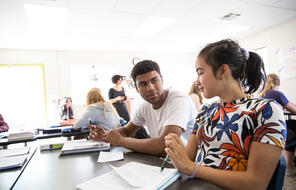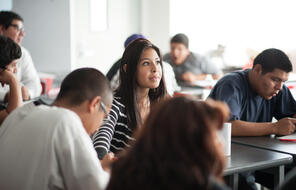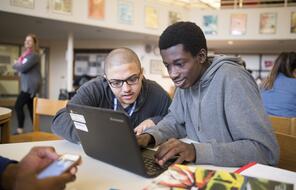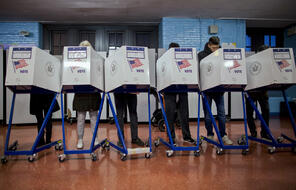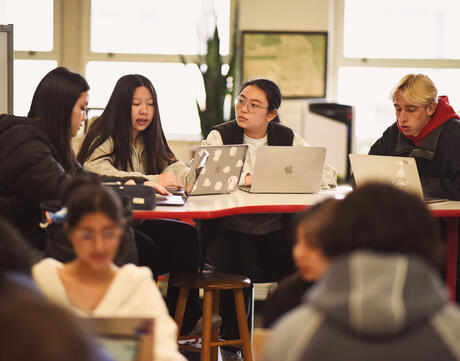
Young People’s Perspectives on Democracy & Polarization
Subject
- Civics & Citizenship
- Social Studies
Grade
6–12Language
English — USPublished
Get it in Google Drive!
Get everything you need including content from this page
Get it in Google Drive!
Get everything you need including content from this page
Overview
About This Activity
This 20-minute activity invites students to explore the perspectives of young people across the country and their views on the state of politics, civic engagement, and democracy by reviewing a national survey of 18- to 24-year-old Americans. Students will reflect on their own perspectives on the same topics and compare their class results to the national sample. They will also consider both the warning signs and the grounds for optimism in the data, as well as the role that young people can play in strengthening our democracy.
Activity Materials
Steps For Implementation
- Prepare Students for the Activity
Let students know that you are going to explore the perspectives of young people across the country as they relate to the state of politics, civic engagement, and democracy. The Civic Outlook of Young Adults in America is a national survey of 18- to 24-year-old Americans conducted by the Institute for Citizens & Scholars. - Gather Students’ Perspectives with a Survey
First, survey your students to gather their own perspectives so that they can compare their responses to the national sample. Ask students to answer these survey questions via a platform like Google Forms, Mentimeter, Poll Everywhere, or Survey Monkey. Let students know that they will not put their name on the survey and the results will be shared anonymously and combined with all the other responses from their classmates. You could instead ask students to mark their answers on chart paper around the room, or facilitate a Barometer activity using the same survey questions. - Review Survey Results
Next, pass out the handout Civic Outlook of Youth & Young Adults. As you share the overall results of the class survey, ask students to fill out the second column with highlights.
Then review the results from the national sample of young adults that are listed in the third column of the chart. Where possible, similar findings from polls of adults are included on the handout for further comparison.
Finally, ask students to take a few minutes to compare the results from their class with the national sample and reflect. They can write their thoughts in the fourth column.
Move students into small groups to share their thoughts about and reactions to the results. Ask them to discuss the following and take notes on their handout: Then bring the group back together to discuss students’ thoughts and reflections.- What stood out as similar and different between the two sets of results?
- What makes you concerned as you look at these results?
- What makes you hopeful as you look at these results
- Optional: Explore the Researchers’ Conclusions
If time allows, you could share an excerpt from the researchers’ conclusions about the survey from their report:
The survey reveals a warning sign for American democracy. Americans aged 18 to 24 are dissatisfied with the political system and pessimistic about democracy, lack critical civic knowledge and trust in government institutions, and are less likely to vote in the 2024 election than the general population. However, there are grounds for optimism in this demographic. They exhibit a lower degree of ideological and partisan polarization, are proud to be American, reject political violence, and collectively prioritize democratic values.
The survey also confirms an important characteristic of young adults: their potential and motivation to play a vital role in strengthening democracy, but they must be engaged in a meaningful way. This will require talking to, learning from, and collaborating with Gen Z to understand what’s underneath the tensions present in these data on productive engagement and commitment to democracy.
You can then discuss students’ thoughts and reflections. You could ask the following questions as prompts:
- Do you agree or disagree about the warning signs and the grounds for optimism that the researchers highlight? Why or why not?
- Do you think that young people can play a vital role in strengthening democracy? Why or why not?
- What do you think would help young people engage with and commit to democracy?
Unlimited Access to Learning. More Added Every Month.
Facing History & Ourselves is designed for educators who want to help students explore identity, think critically, grow emotionally, act ethically, and participate in civic life. It’s hard work, so we’ve developed some go-to professional learning opportunities to help you along the way.
Exploring ELA Text Selection with Julia Torres
On-Demand

Working for Justice, Equity and Civic Agency in Our Schools: A Conversation with Clint Smith
On-Demand

Centering Student Voices to Build Community and Agency
On-Demand





